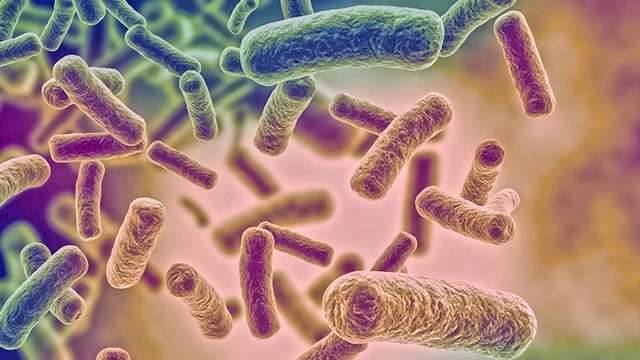Microecology and Cancer Research Solutions
Inquiry
>
The importance of microecology in cancer

Microorganisms play an extremely important role in the process of human nutrition metabolism, self-development, immune response, and disease occurrence. Human microbes are associated with various malignant tumors such as colorectal cancer, liver cancer, and gastric cancer. They can affect the onset, progression, and even treatment of cancer. On the one hand, microorganisms can affect the pharmacokinetics of drugs; on the other hand, microorganisms that are symbiotic with cells can affect the local and even the distant immune system. The connection between microbes and cancer is complex and close. For example, studies have shown that intestinal pathogenic bacteria can promote cell proliferation, while intestinal symbiotic bacteria protect the body against tumor cell growth. In some cases, intestinal pathogenic bacteria which stimulate tumors may have the exact opposite effect on another tumor.
 Request a Quote
Request a Quote
Accelerate your research and practice in cancer
The microbiota not only plays an important role in the onset and progression of tumors, but also provides insight into the targeted cancer treatment. We use next-generation sequencing, third-generation high-throughput sequencing, PCR-DGGE and other methods to measure the DNA of microorganisms in the sample, and process large amounts of data through bioinformatics analysis to reveal the types of microorganisms, the relative abundance, evolutionary relationship, and to provide analysis of functional characterization and pathways. What’s more, we can provide the real-time fluorescence quantitative PCR method to quantitatively study microbial populations, explore microbial diversity, and study the relationship between microbes and cancer microecology.
The main research direction of cancer microecology

Microbial diversity and abundance analysis in tumor
We can provide efficient and accurate solutions including 16S/18S/ITS sequencing and metagenomic sequencing for cancer microbial abundance and diversity analysis, so as to monitor host health status. The resolution of species identification and the accuracy of microbiota structure identification in the sample can be improved utilizing the PacBio SMRT sequencing or Nanopore sequencing.

Microorganisms and cancer development
We provide microbial sequencing and bioinformatics analysis to explore the effect of microorganisms in the cancer development. We help clarify the deep mechanism of microbial regulation of host immune response, reveal the complex relationship between microbiota and tumor at development, and probably contribute to the discovery of new tumor diagnostic or prognostic indicators.

Development of cancer treatment
Microorganisms can be used as a drug delivery vehicle in the treatment of cancer. Changing the microbial flora may cause a variety of downstream reactions which prevent cancer or promote the therapeutic effects of various anti-tumor therapies. We offer a range of microbial genomics techniques for the development of precise treatment protocols for tumor.
What can we do?
- 1. Identify the microbial diversity and abundance in the microecology of tumor;
- 2. Quantification of certain microorganisms in the microecology of tumor;
- 3. Evolutionary analysis, functional characterization, and pathway analysis;
- 4. Predict the relationship between microbes and tumor initiation and progression.
Note: Our services are for research use only, not for disease diagnosis and treatment.
Detectable Objects
Microorganisms in tumor samples from human and animals
Detectable Microorganisms
Bacteria, fungi, viruses, etc.
Detection Methods
Next-generation sequencing, third-generation sequencing, PCR-DGGE, real-time qPCR (RT-qPCR), etc.
Technical Platforms
Illumina HiSeq/Miseq, Ion Torrent, PacBio SMRT instruments, Nanopore instruments, PCR-DGGE, RT-qPCR, clone library, and other detection platforms.
Sample Requirement

DNA sample: total DNA ≥ 300 ng, concentration ≥ 10 ng/μL, OD260/280=1.8-2.0
Ensure that the DNA is not degraded.
Avoid repeated freeze-thaw cycles during sample storage and transport.
Please use ice pack or dry ice to transport samples.
We provide a broad range of oral and fecal sample collection kits for microbial recovery and analysis.
Workflow
 Figure 1. High-throughput sequencing analysis process
Figure 1. High-throughput sequencing analysis process
 Figure 2. PCR-DGGE analysis process
Figure 2. PCR-DGGE analysis process
Bioinformatics Analysis
| Basic Analysis |
Routine Analysis (According to Customer Requirements) |
Advanced Data Analysis |
| Sequence Filtering and Trimming |
Heatmap |
Phylogenetic Tree |
| Sequence Length Distribution |
VENN |
LDA-Effect Size (LEfSe) |
| OTU Clustering and Species Annotation |
Principal Components Analysis (PCA) |
Network Analysis |
| Diversity Index |
Microbial Community Structure Analysis |
Correlation Analysis |
| Shannon-Wiener Curve |
α Diversity Index Analysis |
|
| Rank-Abundance Curve |
Matastats Analysis |
|
| Rarefraction Curve |
Weighted Unifrac test |
|
| Multiple Contrast |
CCA/RDA Analysis |
|
| Heatmap |
|
|
| Principal Components Analysis (PCA) |
|
|
Reference
- Helmink B A, Khan M a W, Hermann A, et al. The microbiome, cancer, and cancer therapy. Nature Medicine, 2019, 25(3): 377-388.
- Roy S, Trinchieri G. Microbiota: a key orchestrator of cancer therapy. Nature Reviews Cancer, 2017, 17(5): 271-285.
- Koos B, Kamali-Moghaddam M, David L, et al. Next-generation pathology—surveillance of tumor microecology. 2015, 427(11): 2013-2022.
- Zitvogel L, Ma Y, Raoult D, et al. The microbiome in cancer immunotherapy: Diagnostic tools and therapeutic strategies. 2018, 359(6382): 1366-1370.
- Łukasiewicz K, Fol M. Microorganisms in the treatment of cancer: advantages and limitations. Journal of immunology research, 2018, 2018.
- Viaud S, Saccheri F, Mignot G, et al. The intestinal microbiota modulates the anticancer immune effects of cyclophosphamide. science, 2013, 342(6161): 971-976.
Related Sections
Solutions:
* For research purposes only, not intended for clinical diagnosis, treatment, or individual health assessments.







 Figure 1. High-throughput sequencing analysis process
Figure 1. High-throughput sequencing analysis process Figure 2. PCR-DGGE analysis process
Figure 2. PCR-DGGE analysis process